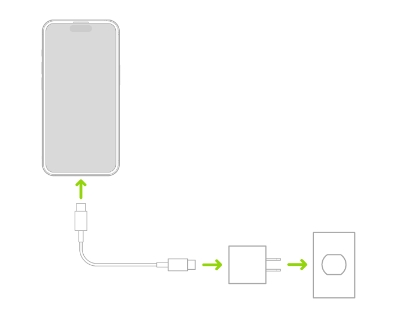Hot Topics
 by Maggie Mueller
Updated On Sep 4, 2024
Published On Sep 4, 2024
Basic iPhone Tips Ideal for Newbies
by Maggie Mueller
Updated On Sep 4, 2024
Published On Sep 4, 2024
Basic iPhone Tips Ideal for Newbies
While an iOS update is one of the simplest processes, it is not uncommon for users to experience various issues during installation. One of the most common issues is an iOS update that keeps pausing, which can be especially frustrating because it can be difficult to pinpoint the cause.
In this article, we'll explore some of the reasons why your iOS update keeps pausing and what you can do to resolve the problem.
Although it can be difficult to determine exactly why your iOS update is pausing, some common causes include:

Before trying any invasive solutions, it is advisable to restart your device. A forced restart can eliminate some system bugs that might interfere with the iOS update and refresh the device's memory. Here's how to force restart your iPhone:
For iPhone 8, iPhone SE (2nd generation), and later models: Press and quickly release the Volume Up button, then do the same with the Volume Down button. Finally, press and hold the Side button. Release the Side button when the Apple logo appears, and allow the device to restart.

For iPhone 7 and 7 Plus: Press and hold both the Power and Volume Down buttons. Release them when the Apple logo appears, and let the device restart.

For iPhone 6s, iPhone SE (1st generation), and earlier models: Press and hold both the Power and Home buttons simultaneously. Release them when the Apple logo appears.

A low battery may cause the iOS update process to pause. Apple recommends having at least 50% battery before starting the update. However, to prevent the battery from falling below 50% during the update, it's advisable to connect your iPhone to a charger and leave it plugged in until the update is complete.

An unstable network is one of the most common causes of a paused iOS update. A stable connection is required between your device and Apple's update servers, or the update will keep failing, and you may see a grayed-out "Resume Download" button.
If you suspect the network is to blame, try these troubleshooting steps:

If you're using a VPN, turn it off. You can do this either by opening the VPN app and disabling it or by turning it off in the iPhone settings. You can always turn it back on after the update.

An iOS update can fail if your iPhone's storage is full. To check the available storage space, go to Settings > General > iPhone Storage. If storage is low, consider deleting large files, such as duplicate photos, unused apps, music, podcasts, messages, and browsing history. You can also transfer some photos and videos to a computer to free up space for the update.

You can check the Apple System Status page to ensure the necessary servers are functional. Visit Apple System Status and look for a green dot next to services like iCloud Account & Sign-in, the App Store, and others essential for an iOS update. If any status is not green, Apple's servers may be down, and you should try updating your device later.

To ensure the problem is not with the Settings app itself, try quitting and reopening it. Open the App Switcher, drag the Settings app card up and off the screen, wait a few seconds, and then reopen the app to attempt the update again.

A previously downloaded incomplete update or iOS beta software may cause an update to fail. Remove any previously downloaded updates by going to Settings > General > iPhone Storage, finding the software update in the list, and selecting "Delete Update," and try again.

If you're still having trouble updating via the Settings app, use Finder (macOS) or iTunes (PC) to update the device:

If the update keeps getting stuck, using an iOS system repair tool like TinyFix can help resolve the issue without affecting your data. Follow these steps:

Updating your iOS may not always go smoothly, but most issues can be easily fixed. We hope the solutions in this guide have been helpful and that you're now able to update your iPhone successfully.
